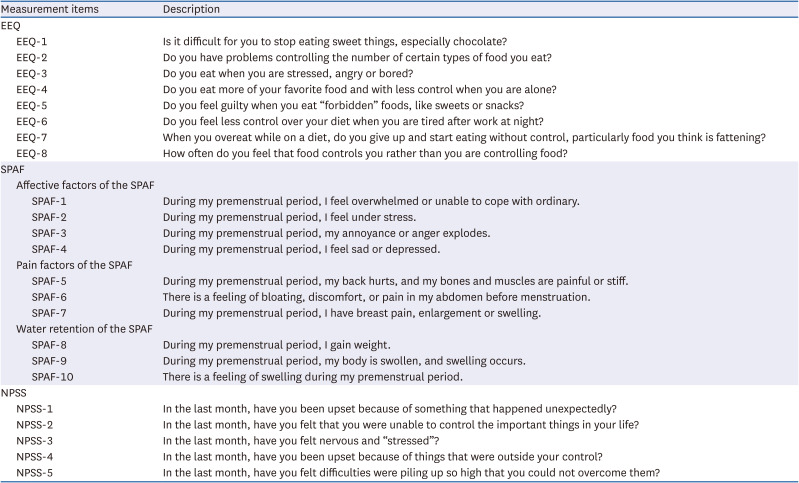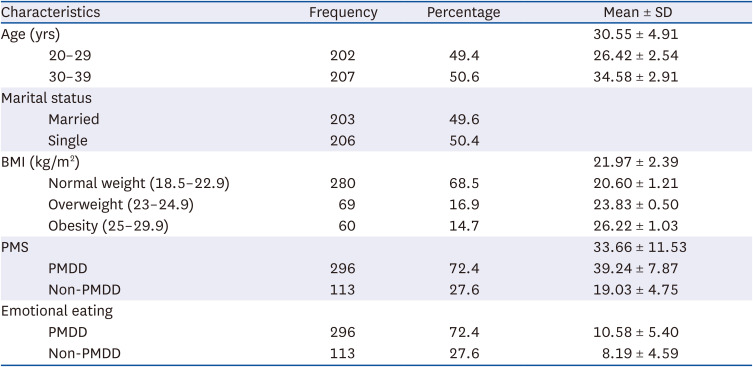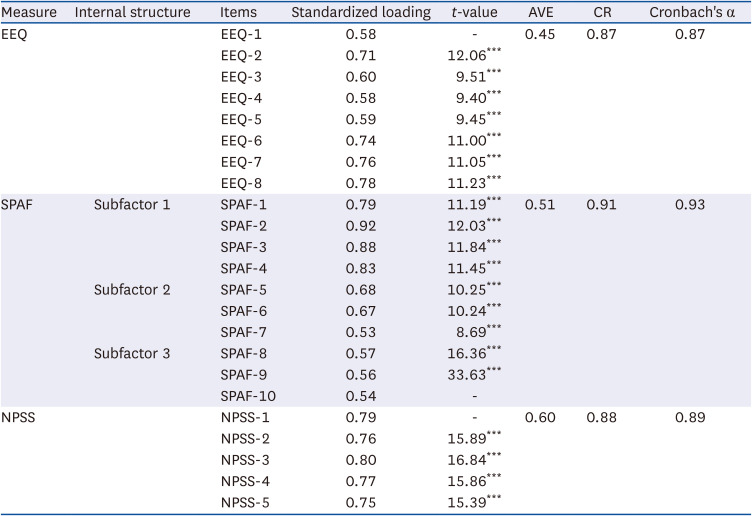1. Bruch H. Eating Disorders: Obesity, Anorexia Nervosa, and the Person Within. London: Routledge & Kegan Paul;1974.
2. van Strien T, van de Laar FA, van Leeuwe JF, Lucassen PL, van den Hoogen HJ, Rutten GE, van Weel C. The dieting dilemma in patients with newly diagnosed type 2 diabetes: Does dietary restraint predict weight gain 4 years after diagnosis? Health Psychol. 2007; 26:105–112. PMID:
17209703.
3. Barrington WE, Beresford SA, McGregor BA, White E. Perceived stress and eating behaviors by sex, obesity status, and stress vulnerability: findings from the vitamins and lifestyle (VITAL) study. J Acad Nutr Diet. 2014; 114:1791–1799. PMID:
24828150.
4. Adam TC, Epel ES. Stress, eating and the reward system. Physiol Behav. 2007; 91:449–458. PMID:
17543357.
5. Nguyen-Rodriguez ST, Unger JB, Spruijt-Metz D. Psychological determinants of emotional eating in adolescence. Eat Disord. 2009; 17:211–224. PMID:
19391020.
6. Costa C, Briguglio G, Mondello S, Teodoro M, Pollicino M, Canalella A, Verduci F, Italia S, Fenga C. Perceived stress in a gender perspective: a survey in a population of unemployed subjects of Southern Italy. Front Public Health. 2021; 9:640454. PMID:
33869130.
7. Klump KL, Keel PK, Culbert KM, Edler C. Ovarian hormones and binge eating: exploring associations in community samples. Psychol Med. 2008; 38:1749–1757. PMID:
18307829.
8. Klump KL, Keel PK, Racine SE, Burt SA, Neale M, Sisk CL, Boker S, Hu JY. The interactive effects of estrogen and progesterone on changes in emotional eating across the menstrual cycle. J Abnorm Psychol. 2013; 122:131–137. PMID:
22889242.
9. Brantelid IE, Nilvér H, Alehagen S. Menstruation during a lifespan: a qualitative study of women’s experiences. Health Care Women Int. 2014; 35:600–616. PMID:
24313552.
10. Reece EA, Barbieri RL. Obstetrics and Gynecology: The Essentials of Clinical Care. New York (NY): Thieme;2010.
11. Reed BG, Carr BR. The normal menstrual cycle and the control of ovulation. Feingold KR, Anawalt B, Boyce A, Chrousos G, de Herder WW, Dhatariya K, Dungan K, Hershman JM, Hofland J, Kalra S, editors. Endotext. . South Dartmouth (MA): MDText.com, Inc.;2000.
12. Patricio BP, Sergio BG. Menstrual Cycle. London: IntechOpen;2019.
13. Freeman EW. Premenstrual syndrome and premenstrual dysphoric disorder: definitions and diagnosis. Psychoneuroendocrinology. 2003; 28(Suppl 3):25–37. PMID:
12892988.
14. Ryu A, Kim TH. Premenstrual syndrome: a mini review. Maturitas. 2015; 82:436–440. PMID:
26351143.
15. Epperson CN, Steiner M, Hartlage SA, Eriksson E, Schmidt PJ, Jones I, Yonkers KA. Premenstrual dysphoric disorder: evidence for a new category for DSM-5. Am J Psychiatry. 2012; 169:465–475. PMID:
22764360.
16. Yen JY, Liu TL, Chen IJ, Chen SY, Ko CH. Premenstrual appetite and emotional responses to foods among women with premenstrual dysphoric disorder. Appetite. 2018; 125:18–23. PMID:
29407746.
17. Ha J, Kim EJ, Suh HS, Kim CH, Oh KS. Correlation between luteal eating behavior symptom and trait anxiety in premenstrual dysphoric disorder: a preliminary study. J Korean Neuropsychiatr Assoc. 2016; 55:60–66.
18. Prado RC, Silveira R, Kilpatrick MW, Pires FO, Asano RY. Menstrual cycle, psychological responses, and adherence to physical exercise: viewpoint of a possible barrier. Front Psychol. 2021; 12:525943. PMID:
33679501.
19. Lee MH, Kim JW, Lee JH, Kim DM. The standardization of the shortened premenstrual assessment form and applicability on the internet. J Korean Neuropsychiatr Assoc. 2002; 41:159–167.
20. Garaulet M, Canteras M, Morales E, López-Guimera G, Sánchez-Carracedo D, Corbalán-Tutau MD. Validation of a questionnaire on emotional eating for use in cases of obesity: the Emotional Eater Questionnaire (EEQ). Nutr Hosp. 2012; 27:645–651. PMID:
22732995.
21. Framson C, Kristal AR, Schenk JM, Littman AJ, Zeliadt S, Benitez D. Development and validation of the mindful eating questionnaire. J Am Diet Assoc. 2009; 109:1439–1444. PMID:
19631053.
22. Arslantaş H, Dereboy F, Yüksel R, İnalkaç S. Validity and reliability of the Turkish version of the emotional eater questionnaire (EEQ-TR). Turk Psikiyatr Derg. 2020; 31:122–130.
23. Bernabéu E, Marchena C, Iglesias MT. Factor structure and psychometric properties of emotional eater questionnaire (EEQ) in Spanish colleges. Int J Environ Res Public Health. 2020; 17:9090. PMID:
33291442.
24. Allen SS, McBride CM, Pirie PL. The shortened premenstrual assessment form. J Reprod Med. 1991; 36:769–772. PMID:
1765953.
25. Cohen S, Kamarck T, Mermelstein R. A global measure of perceived stress. J Health Soc Behav. 1983; 24:385–396. PMID:
6668417.
26. Lee EH. Review of the psychometric evidence of the perceived stress scale. Asian Nurs Res. 2012; 6:121–127.
27. Park JO, Seo YS. Validation of the perceived stress scale (PSS) on samples of Korean university students. Korean J Psychol Gen. 2010; 29:611–629.
28. Fornell C, Larcker DF. Evaluating structural equation models with unobservable variables and measurement error. J Mark Res. 1981; 18:39–50.
29. Hayes AF. Beyond Baron and Kenny: statistical mediation analysis in the new millennium. Commun Monogr. 2009; 76:408–420.
30. Macht M. How emotions affect eating: a five-way model. Appetite. 2008; 50:1–11. PMID:
17707947.











 PDF
PDF Citation
Citation Print
Print



 XML Download
XML Download